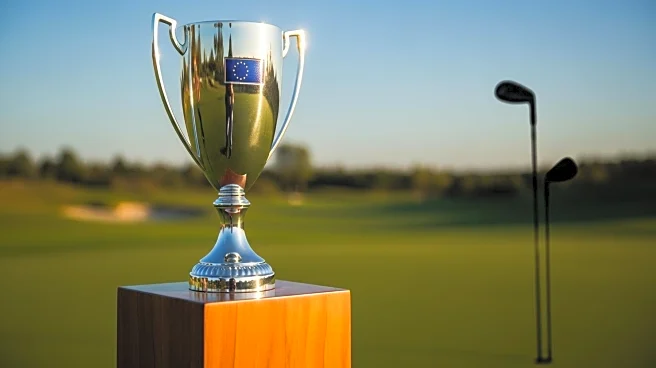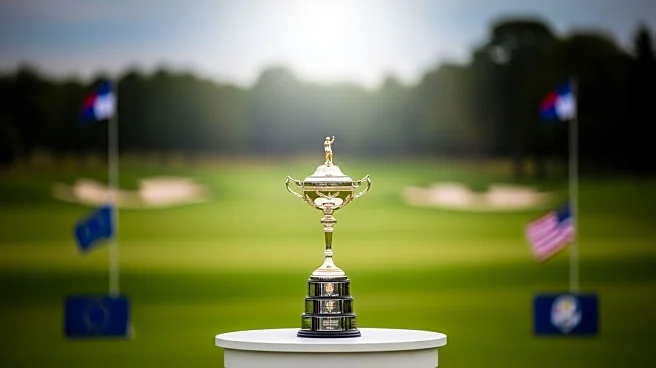What's Happening?
The Ryder Cup concluded with Europe retaining the trophy after surviving a strong comeback attempt by Team USA. Despite a valiant effort on Sunday, where American golfers like Cameron Young, Justin Thomas, Scottie Scheffler, and Xander Schaueffle won their matches, the initial lead established by Europe proved insurmountable. Europe started the final day with a significant lead, and although the U.S. team closed the gap to 13½-10, Europe ultimately secured victory with a final score of 15-13. Shane Lowry's crucial birdie putt on the 18th hole ensured Europe reached the necessary 14 points to retain the Ryder Cup. The event was marked by intense competition and controversial behavior from the Bethpage gallery, which targeted European players with verbal abuse.
Why It's Important?
The Ryder Cup is a prestigious golf event that showcases international competition between Europe and the United States. Europe's victory highlights their dominance in recent years, having won 11 of the last 15 tournaments. This outcome underscores the need for the U.S. team to reassess its strategies and player selections to regain competitiveness. The behavior of the American crowd raises questions about sportsmanship and the impact of home-field advantage, which failed to intimidate the European team. The event's conclusion may prompt discussions on improving conduct and fostering a more respectful environment in future competitions.
What's Next?
Looking ahead, the U.S. team will need to address the widening gap in performance compared to Europe. This may involve changes in team management, player development, and preparation strategies. The next Ryder Cup will take place at Adare Manor in Ireland in 2027, offering the U.S. an opportunity to regroup and challenge Europe's dominance. Additionally, the behavior of the Bethpage gallery may lead to stricter regulations on crowd conduct to ensure a fair and respectful atmosphere for players.
Beyond the Headlines
The Ryder Cup's outcome reflects broader trends in international golf, where Europe has consistently outperformed the U.S. team. This dominance may influence the development of golf talent and training programs in the U.S., as stakeholders seek to close the competitive gap. The event also highlights the cultural differences in sportsmanship and fan behavior, prompting discussions on how to balance passionate support with respect for opponents.











